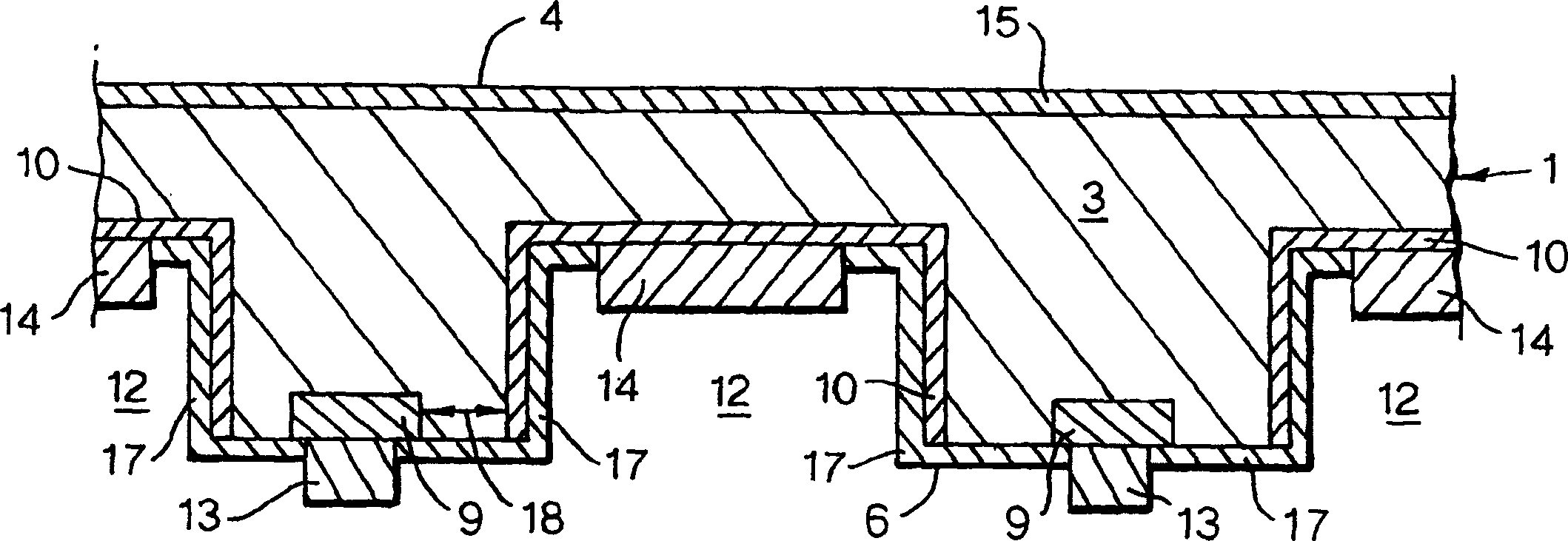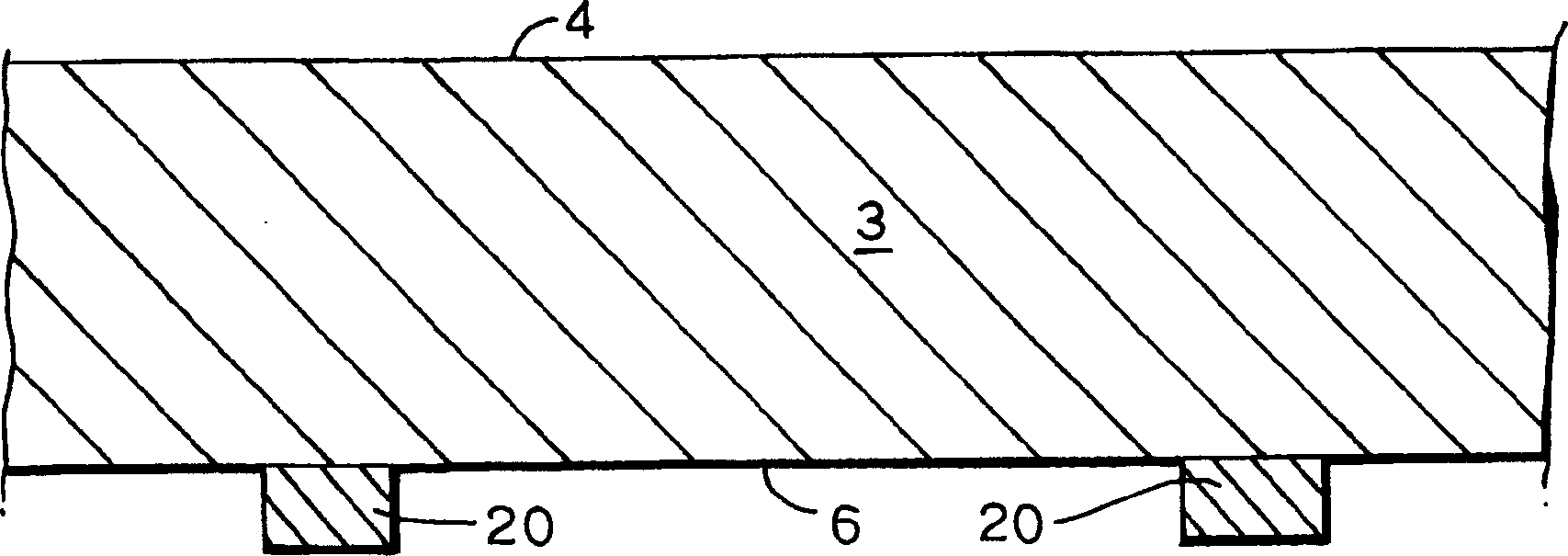Manufacturing a solar cell with backside contacts
A solar cell and backside technology, which is applied in the direction of final product manufacturing, sustainable manufacturing/processing, circuits, etc., can solve the problems of complex solar cells and cost hindering the large-scale application of solar cells, and achieve the effect of reliable regeneration
- Summary
- Abstract
- Description
- Claims
- Application Information
AI Technical Summary
Problems solved by technology
Method used
Image
Examples
Embodiment Construction
[0023] now refer to figure 1 , figure 1 A partial sectional view of a solar cell 1 according to the invention is shown schematically and not to scale.
[0024] The solar cell 1 comprises a silicon wafer 3 with a light-receiving front side 4 and a back side 6 . The silicon wafer 3 has a basic doping, in this example p-type doping.
[0025] On the back side 6, the silicon wafer 3 is provided with an interdigitated semiconductor pattern comprising at least one first pattern of first diffusion regions 9 with a first doping and at least one second diffusion region 10 of second pattern. The second diffusion region 10 is separated from the first diffusion region 9 and they have a second doping different from the first doping. Each second diffusion region 10 is arranged along the side of at least one trench 12 extending from the backside 6 into the silicon wafer 3 . A suitable number of grooves ranges from 1 to 100 grooves per centimeter of wafer width, suitable groove widths ran...
PUM
 Login to View More
Login to View More Abstract
Description
Claims
Application Information
 Login to View More
Login to View More - R&D
- Intellectual Property
- Life Sciences
- Materials
- Tech Scout
- Unparalleled Data Quality
- Higher Quality Content
- 60% Fewer Hallucinations
Browse by: Latest US Patents, China's latest patents, Technical Efficacy Thesaurus, Application Domain, Technology Topic, Popular Technical Reports.
© 2025 PatSnap. All rights reserved.Legal|Privacy policy|Modern Slavery Act Transparency Statement|Sitemap|About US| Contact US: help@patsnap.com



